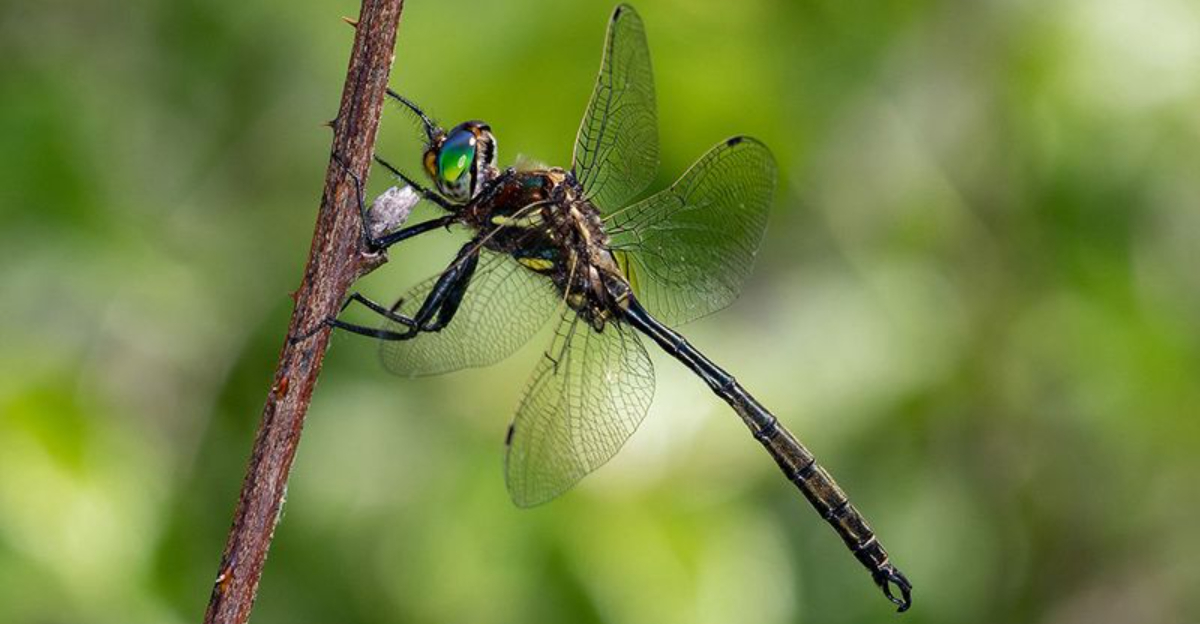Think of dragonflies as nature’s glittering gems—zipping through the air, catching sunlight on their shimmering wings as they dance above Illinois ponds and marshes.
Spend a little time by the water’s edge, and you’ll start noticing these incredible fliers putting on aerial shows all summer long.
Whether you’re a nature nerd or just love being outside, spotting dragonflies adds a little extra magic to any day outdoors.
1. Common Green Darner: The Migratory Marvel
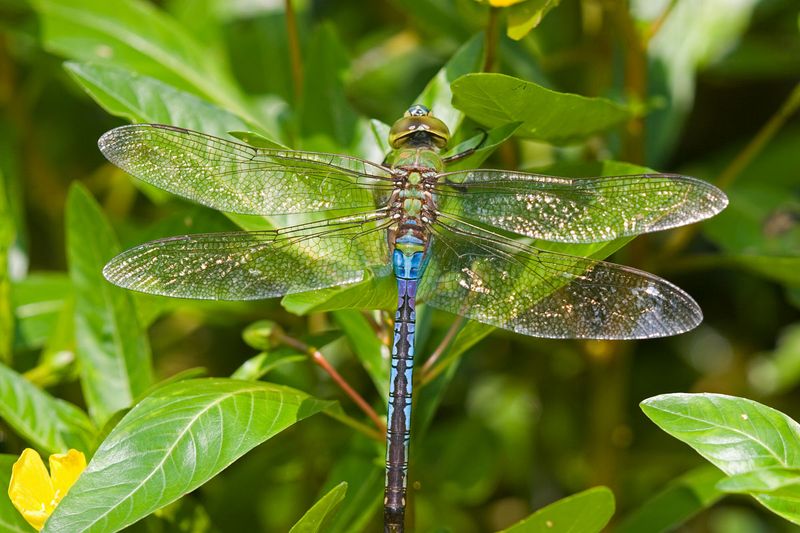
I spotted my first Green Darner while fishing at Chain O’Lakes – its electric blue abdomen flashing like a neon sign against the cattails. These insects migrate just like birds, traveling hundreds of miles south for winter!
Green Darners reach nearly 3 inches long, making them among Illinois’ largest dragonflies. Their bright green thorax paired with that stunning blue abdomen creates an unmistakable profile even for beginners.
Look for them patrolling open areas near water from April through October, often flying higher than other species. They’re fierce predators, snatching mosquitoes mid-flight with their basket-like legs.
2. Twelve-Spotted Skimmer: The Checkerboard Flyer
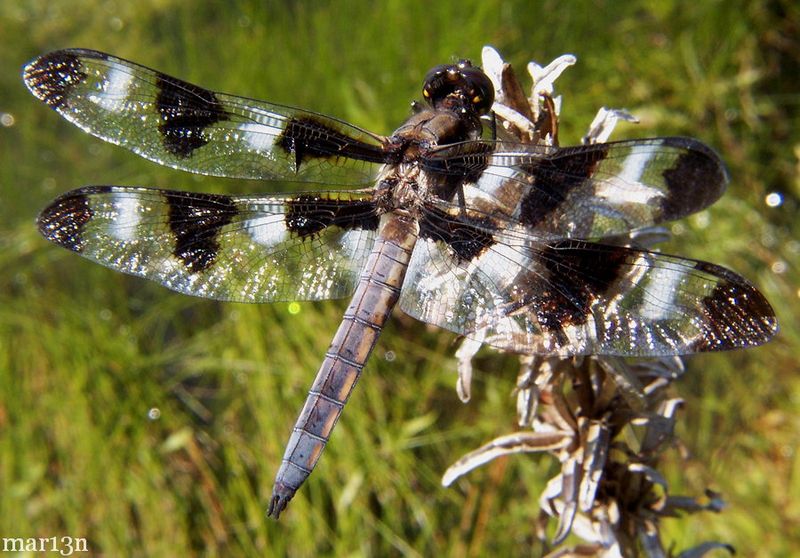
Nothing says ‘summer’s here’ like watching Twelve-Spotted Skimmers play tag above a sun-dappled pond. Males have white and black spotted wings that flash like checkerboards when they zoom past you.
These medium-sized dragonflies perch horizontally on vegetation, constantly surveying their territory. Females look different – they lack the white spots, instead showing yellow markings along their abdomen.
Found throughout Illinois from May through September, they prefer still waters like ponds and marshes. I’ve watched them hover perfectly still, then suddenly dart sideways to snatch a fly – their hunting precision is simply extraordinary!
3. Widow Skimmer: The Blue-Banded Beauty
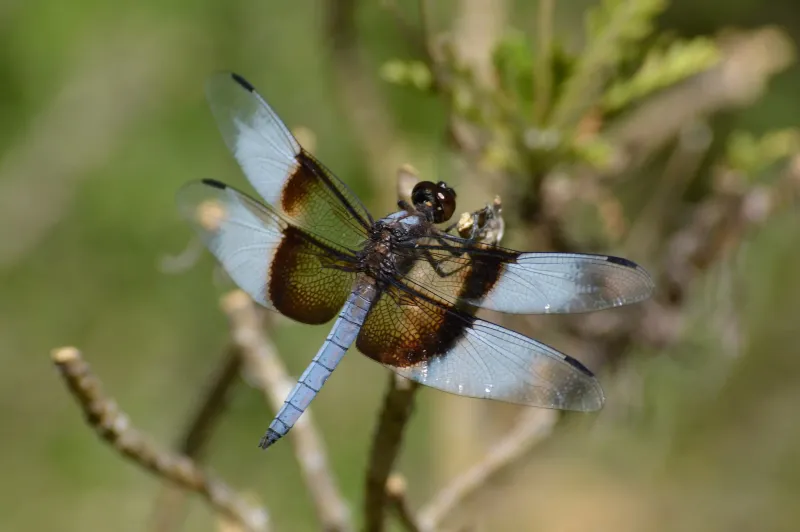
Widow Skimmers stopped me in my tracks during a hike at Moraine Hills State Park last summer. The males display stunning blue pruinosity (a waxy powder) along their abdomens that develops as they mature – nature’s version of growing distinguished with age!
Both sexes feature dark brown patches at the base of their wings, followed by distinctive white bands that make identification a snap. Young males and females have yellow stripes on their abdomens instead of blue.
These adaptable dragonflies thrive in various wetland habitats across Illinois. They’re relatively laid-back, often returning to the same perch after short flights, making them ideal subjects for beginning dragonfly photographers.
4. Eastern Pondhawk: The Gender-Bending Hunter
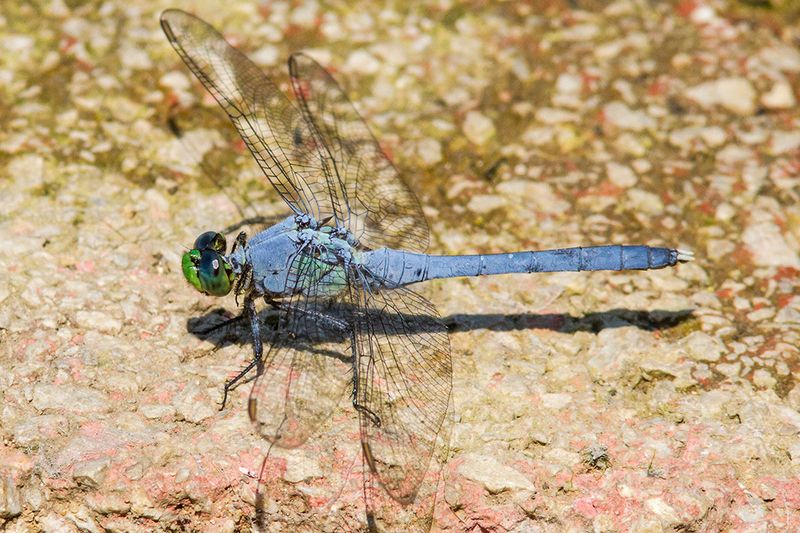
Eastern Pondhawks demonstrate one of the most dramatic gender differences in the dragonfly world. Males are powder blue with a green face, while females rock a striking emerald green body with black tiger-stripe markings.
Young males start life green like females before gradually turning blue – I watched this transformation over several weeks at my local retention pond. Talk about a dramatic makeover!
These aggressive hunters don’t just eat flies – they’ll take down other dragonflies their own size! Find them perched low on vegetation near still water throughout Illinois from May through October. They rarely fly for long, preferring to make short hunting dashes from their lookout spots.
5. Hine’s Emerald: The Endangered Gem
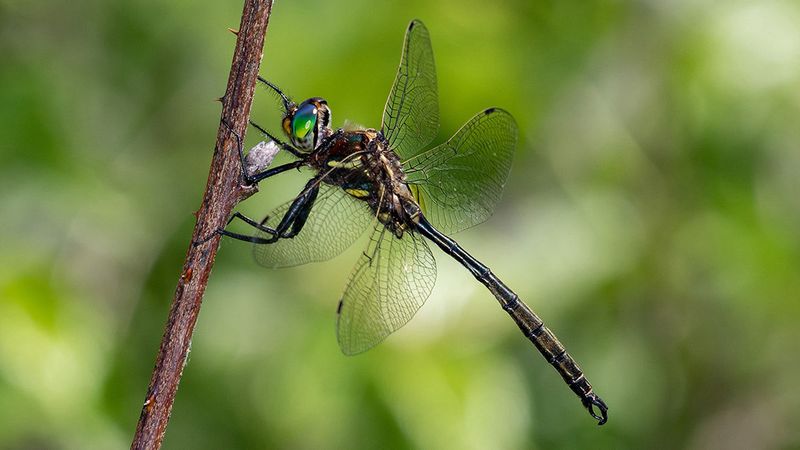
Spotting a Hine’s Emerald feels like winning the lottery – these endangered dragonflies exist in just a few Illinois wetlands. With their bright emerald-green eyes and metallic green bodies, it’s no wonder these dragonflies are called jewels. They’re easy to spot thanks to the yellow stripes on their thorax that form a bull’s-eye pattern.
These stunning creatures have a special place in Illinois, as the state’s Des Plaines River Valley is home to some of their last remaining habitats in the world.
Conservation efforts focus on protecting their specialized spring-fed wetlands with dolomite bedrock. If you’re lucky enough to spot one between June and August, report it to local conservation authorities – your sighting helps protect this vanishing species!
6. Common Whitetail: The Powdered Performer
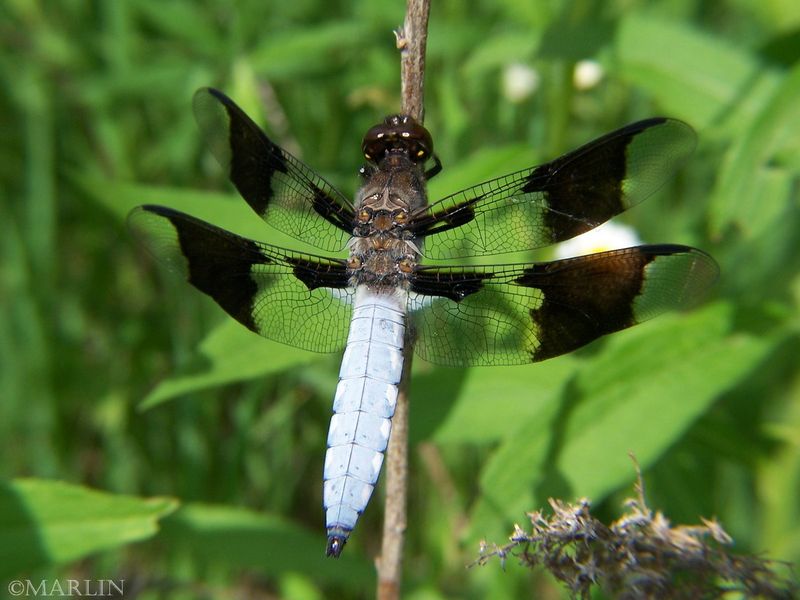
Common Whitetails put on quite a show at my neighborhood park’s pond last July. Males display a chalky white abdomen that’s absolutely unmistakable, flashing it like a beacon as they patrol their territory.
Dragonflies of both genders feature distinctive wing patterns, including dark bands across the middle and base. Females and immature males have brown bodies with yellow stripes along the sides instead of the white powder coating.
These bold dragonflies are often the first you’ll notice in any wetland habitat across Illinois. They’re fearless, returning to favorite perches even after being disturbed, and have one of the longest flight seasons – I’ve spotted them from April through October. Perfect for beginning dragonfly enthusiasts!
7. Halloween Pennant: The Orange Flag-Waver
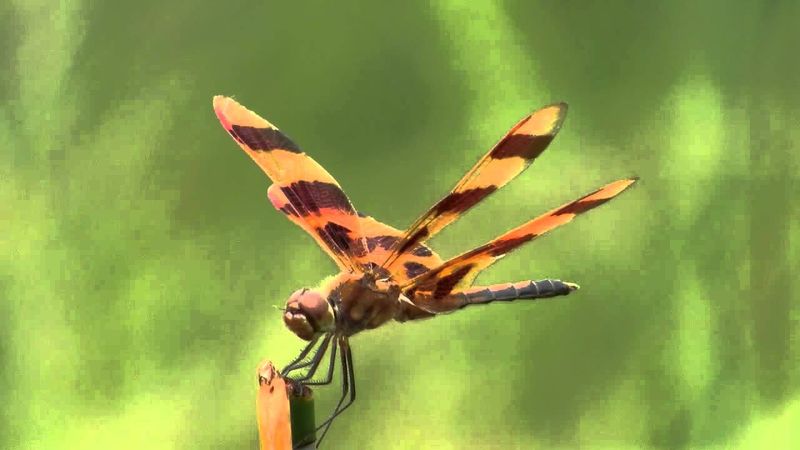
Halloween Pennants bring a festive pop of color to Illinois wetlands! Their amber-orange wings with dark brown spots look just like tiny Halloween flags fluttering in the breeze—which is why they’ve earned such a fitting name.
These medium-sized dragonflies perch at the tips of tall grasses, swaying in the wind like miniature weathervanes. The males display bright orange bodies, while females feature a more yellowish hue.
I’ll never forget watching dozens of them decorating the reeds at Volo Bog like festive ornaments. Find them around ponds, lakes, and slow streams from June through September. They’re especially active during hot, sunny days when other dragonflies might seek shade – real sun-worshippers of the insect world!
8. Blue Dasher: The Sapphire Sentinel
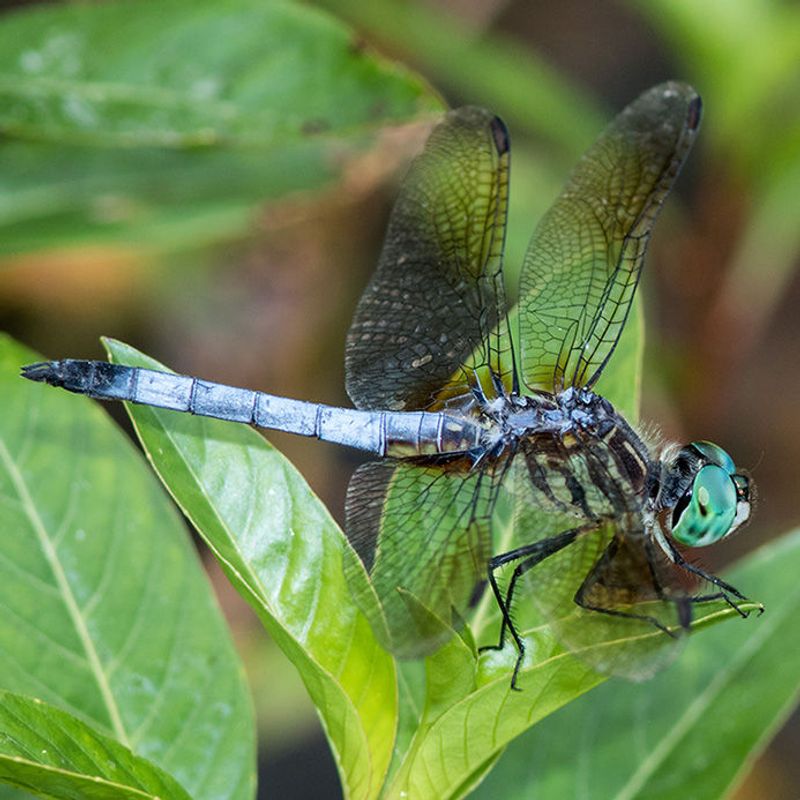
Blue Dashers live up to their name – they zip across the water’s surface with incredible speed! Males have a vibrant powder-blue abdomen that looks almost artificially colored, contrasting beautifully with their emerald-green eyes.
These territorial little warriors often perch with their abdomens tilted upward in a characteristic pose. Females and younger males wear yellow stripes instead of blue, showing off that cool gender difference I’ve come to love in dragonflies.
During a kayaking trip through Shabbona Lake, I counted over thirty of these animated jewels darting around my boat. Their adaptability to various wetland habitats makes them one of the most commonly encountered dragonflies throughout Illinois from May through October.
9. Black Saddlebags: The Aerial Patroller
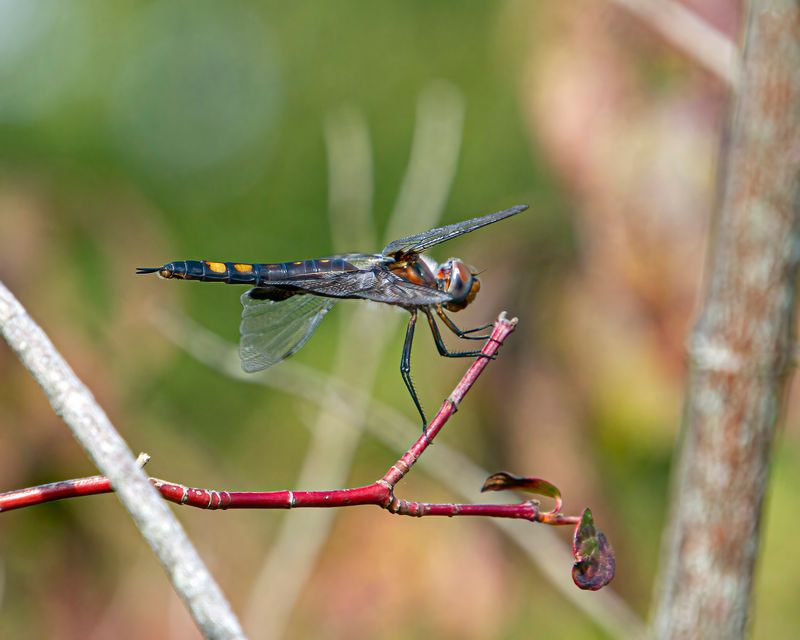
Black Saddlebags earn their distinctive name from the inky black patches near the base of their hindwings that truly resemble saddlebags on a horse. Their slender black bodies stretch nearly 2 inches long, making them impressive aerial hunters.
Unlike many dragonflies that perch frequently, these restless flyers seem perpetually in motion. They patrol high above water bodies or fields, rarely landing except in early morning or evening.
Last August, I watched a swarm of them feasting on a mayfly hatch at Chain O’Lakes – they worked together like a squadron of tiny fighter jets! Look for them throughout Illinois from June through October, especially near larger lakes and rivers where they hunt mosquitoes and midges by the hundreds.
10. Calico Pennant: The Polka-Dotted Wonder
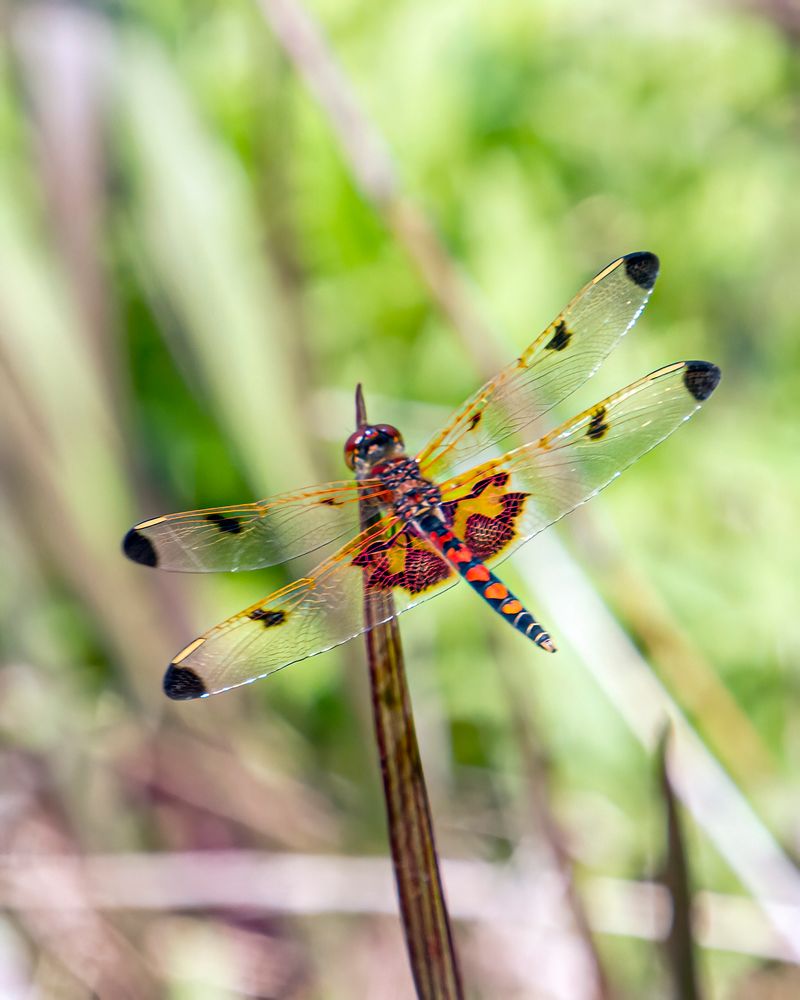
Calico Pennants bring a splash of whimsy to Illinois wetlands with their polka-dotted appearance. Males display bright red spots on a yellow body, while females show yellow spots instead – both are equally charming!
These small, colorful dragonflies hold their wings horizontally when perched, showing off their spotted pattern. They’re relatively tame, often allowing close observation if you approach slowly.
During a particularly hot day at Volo Bog, I watched a male repeatedly dip his abdomen into the water – a behavior called “dipping” that helps cool them down. Find these delightful creatures from May through September in marshes, bogs, and ponds throughout Illinois, especially where abundant low vegetation provides perfect perching spots.
11. Prince Baskettail: The Dusk Patrol
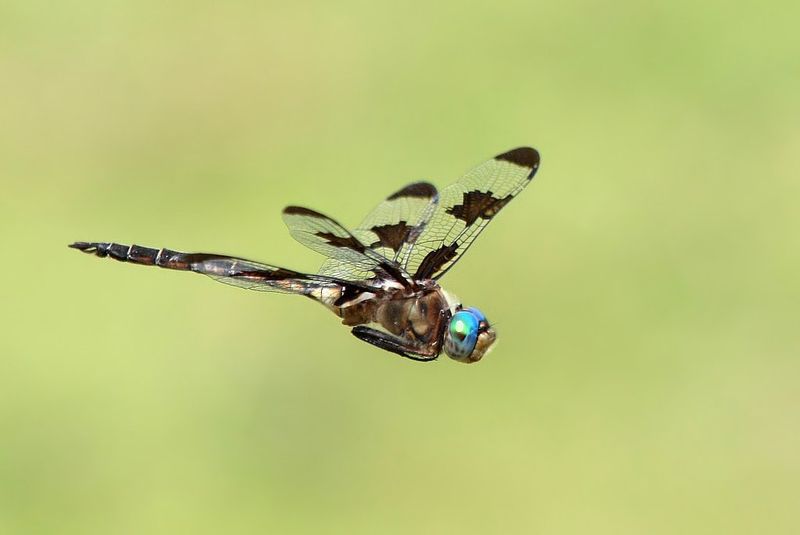
Prince Baskettails earned a special place in my heart during an evening fishing trip when dozens appeared at sunset, patrolling the lake’s edge with remarkable precision. These large dragonflies get their charming name from the basket-like appendages at the end of their abdomens.
With translucent wings spanning over 3 inches and olive-green bodies, they cut impressive figures against the twilight sky. Unlike many dragonflies, they’re most active during dawn and dusk – nature’s crepuscular mosquito control!
They rarely perch during daylight hours, making them challenging to photograph. Look for them flying tirelessly above larger lakes and rivers throughout Illinois from May through September, sometimes forming feeding swarms of dozens or even hundreds of individuals.
12. Ruby Meadowhawk: The Crimson Cruiser

Ruby Meadowhawks transform Illinois prairies into magical landscapes each late summer. Mature males develop a stunning ruby-red coloration that simply glows in the golden afternoon light – I’ve spent hours photographing them at Midewin National Tallgrass Prairie.
These medium-sized dragonflies perch conspicuously on grassland vegetation, making them relatively easy to spot. Females and immature males wear yellowish-brown colors before the males develop their signature crimson hue.
What sets them apart is their habitat choice — unlike most dragonflies, they often wander far from water into meadows and prairies. Look for them from July through October, sometimes persisting into November as one of the last dragonfly species flying before winter arrives in Illinois.
13. Wandering Glider: The Globetrotter
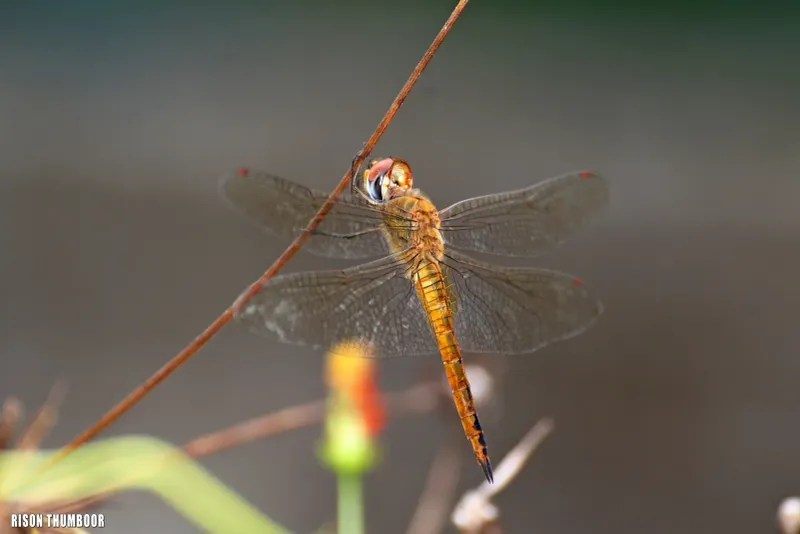
Wandering Gliders hold the title of world’s most widespread dragonfly – these golden-hued travelers literally circle the globe! Their exceptional flying abilities allow them to cross oceans and continents, earning them the nickname “globe skimmer.”
With amber-tinted wings and a yellowish-brown body, they’re built for endurance rather than speed. These insects can stay aloft for hours without landing, riding thermals like tiny hawks.
I’ll never forget watching hundreds appear suddenly at Illinois Beach State Park following a summer storm – they actually track weather fronts to find food! Look for them from June through October in open areas throughout Illinois, often far from water. Their arrival in large numbers typically coincides with southward migration.
14. Fragile Forktail: The Delicate Damsel
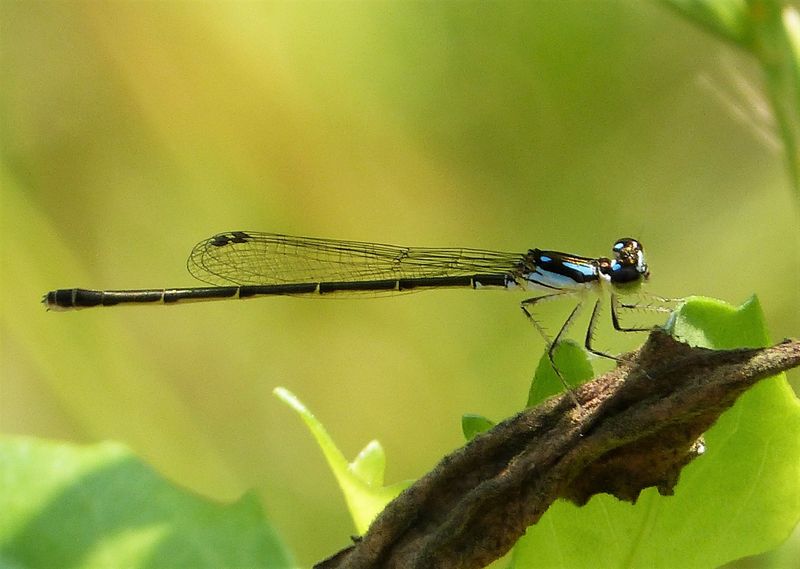
Fragile Forktails might be the tiniest dragonfly relatives you’ll spot in Illinois – these damselflies (dragonflies’ slimmer cousins) measure barely an inch long! Their electric-blue markings on a black body remind me of miniature lightning bolts.
Unlike true dragonflies, these delicate creatures hold their wings together above their bodies when resting. They fly with a distinctive fluttering motion that looks almost butterfly-like.
During a morning walk at Cache River State Natural Area, I found dozens clinging to dewy vegetation like living jewels. These early risers are often the first odonates active in the morning. Look for them from April through October in almost any wetland habitat across Illinois, particularly in sheltered areas with abundant emergent vegetation.
15. Unicorn Clubtail: The Horned Hunter
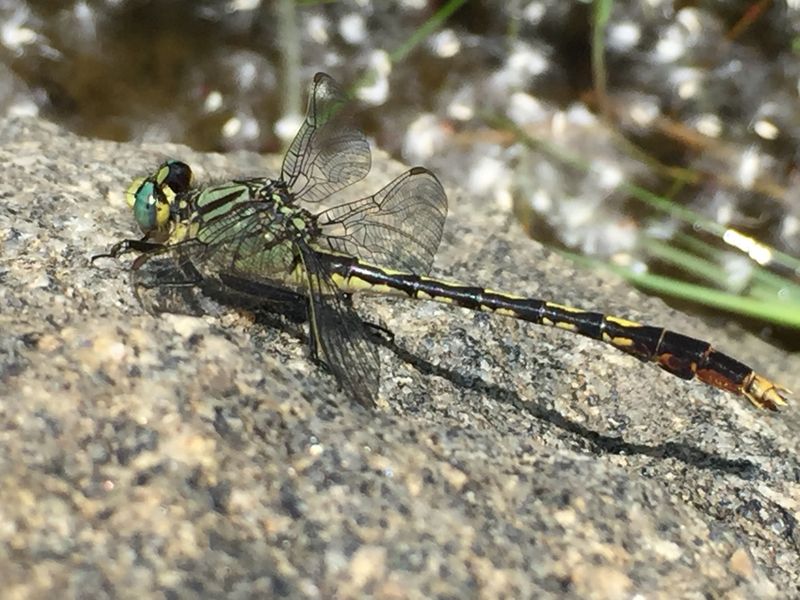
Unicorn Clubtails might just be the weirdest-looking dragonflies in Illinois! Males have this horn-like projection between their eyes, giving them a name straight out of mythology. The first time I spotted one at Kankakee River State Park, I couldn’t believe my eyes.
Their club-shaped abdomen (wider at the end) gives the clubtail family its name. With greenish-yellow and black markings, they’re strikingly patterned but surprisingly difficult to spot when perched on riverside vegetation.
These habitat specialists require clean, flowing water with sandy or rocky bottoms. Conservation-minded folks take note – their presence indicates healthy river ecosystems! Look for them from May through July along rivers and streams throughout central and northern Illinois.
